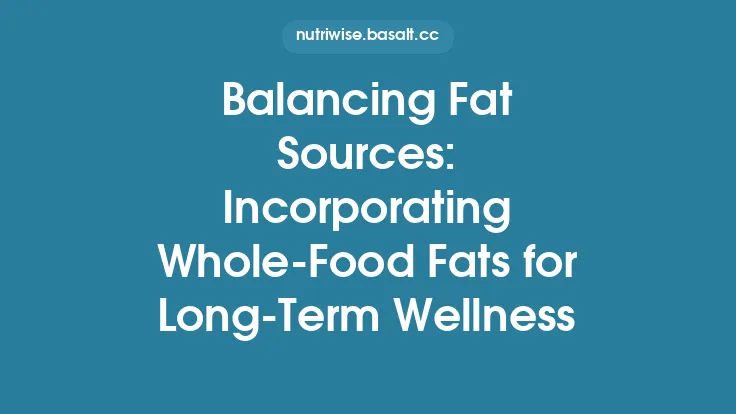Calcium is essential for maintaining the structural integrity of bones and teeth, as well as for supporting muscle function, nerve signaling, and blood clotting. While dairy products have traditionally been highlighted as the primary source of this mineral, a wide variety of plant‑based foods can supply ample calcium for individuals following vegetarian, vegan, or flexitarian eating patterns. Below is a comprehensive guide to the top plant‑based calcium sources, organized by food category, with practical information on nutrient density, serving sizes, and considerations for different dietary needs.
Leafy Greens: A Calcium Powerhouse
Leafy greens are among the most concentrated natural sources of calcium. Their high water content means they can be easily incorporated into salads, smoothies, soups, and stir‑fries.
| Green Vegetable | Calcium (mg) per 1 cup (raw) | Notable Nutrients | Dietary Notes |
|---|---|---|---|
| Kale (curly) | 101 | Vitamin K, Vitamin C, potassium | Low oxalate; excellent for those monitoring oxalate intake |
| Collard greens | 266 | Vitamin A, fiber, iron | Very high calcium; can be cooked to reduce bitterness |
| Turnip greens | 197 | Vitamin K, magnesium | Slightly higher oxalate than kale |
| Bok choy (Chinese cabbage) | 158 | Vitamin C, folate | Low oxalate; versatile in Asian dishes |
| Mustard greens | 165 | Vitamin K, glucosinolates | Adds a peppery flavor to sautés |
| Swiss chard (raw) | 101 | Vitamin K, magnesium | Higher oxalate; cooking reduces oxalate content |
Key points
- Raw vs. cooked: Lightly steaming or sautéing greens can improve texture and reduce oxalate levels without significantly diminishing calcium content.
- Serving flexibility: A single cup of cooked collard greens provides more than half the Recommended Dietary Allowance (RDA) for most adults (1,000 mg for men and 1,200 mg for women over 50).
Fortified Plant Milks and Juices
Commercially fortified plant milks and fruit juices are engineered to deliver calcium levels comparable to cow’s milk, often with added vitamin B12 and vitamin D (the latter is not discussed further here). The calcium is typically added as calcium carbonate or tricalcium phosphate, both of which are highly bioavailable.
| Product (≈ 1 cup) | Calcium (mg) | Common Fortification Source | Flavor/Use |
|---|---|---|---|
| Almond milk (unsweetened) | 300–450 | Calcium carbonate | Smoothies, cereal |
| Soy milk (plain) | 300–350 | Calcium carbonate | Coffee, baking |
| Oat milk (original) | 350–400 | Calcium carbonate | Hot drinks, sauces |
| Rice milk (fortified) | 250–300 | Calcium carbonate | Baking, desserts |
| Orange juice (fortified) | 300 | Calcium carbonate | Breakfast, cocktails |
Key points
- Check the label: Not all plant milks are fortified; always verify the calcium content on the nutrition facts panel.
- Calcium source matters: Calcium carbonate provides the highest elemental calcium per gram of additive, making it the most efficient fortification choice.
Legumes and Pulses
Beans, lentils, and peas are not only protein‑rich but also contribute a respectable amount of calcium, especially when consumed in larger portions.
| Legume | Calcium (mg) per ½ cup (cooked) | Additional Benefits |
|---|---|---|
| White beans (navy) | 125 | High fiber, iron |
| Chickpeas (garbanzo) | 80 | Folate, manganese |
| Black beans | 60 | Antioxidants, protein |
| Lentils (green) | 45 | Folate, potassium |
| Edamame (soybeans) | 100 | Complete protein, vitamin K |
Key points
- Cooking method: Soaking beans overnight and discarding the soaking water can reduce phytate levels, modestly improving mineral availability.
- Portion size: A cup of cooked white beans supplies roughly 12 % of the adult RDA for calcium, making legumes a valuable component of a calcium‑rich diet.
Nuts, Seeds, and Their Butters
Nuts and seeds are dense in calories but also pack a calcium punch, especially when eaten raw or lightly roasted.
| Food | Calcium (mg) per ¼ cup | Notable Nutrients |
|---|---|---|
| Almonds | 95 | Vitamin E, magnesium |
| Brazil nuts | 45 | Selenium |
| Sesame seeds (whole) | 280 | Iron, zinc |
| Chia seeds | 180 | Omega‑3 ALA, fiber |
| Tahini (sesame butter) | 130 per 2 Tbsp | Protein, healthy fats |
| Almond butter | 80 per 2 Tbsp | Monounsaturated fats |
Key points
- Calcium density: Sesame seeds are among the most calcium‑dense seeds; sprinkling them on salads or incorporating tahini into dressings can boost calcium intake without adding bulk.
- Allergy considerations: For individuals with nut allergies, seed‑based options like pumpkin or sunflower seeds (≈ 30 mg calcium per ¼ cup) provide alternatives.
Tofu, Tempeh, and Other Soy Products
Soy‑derived foods are versatile and often fortified with calcium during processing, especially in the case of tofu made with calcium salts.
| Soy Product | Calcium (mg) per ½ cup | Production Note |
|---|---|---|
| Tofu (firm, calcium‑set) | 250–400 | Calcium sulfate used as coagulant |
| Tempeh (plain) | 120 | Naturally occurring calcium |
| Soy yogurt (plain) | 300 | Fortified similar to dairy yogurt |
| Soy cheese (vegan) | 200–250 | Often calcium‑carbonate fortified |
Key points
- Calcium‑set tofu: Look for “calcium sulfate” or “calcium chloride” on the ingredient list; these varieties deliver the highest calcium content.
- Texture versatility: Firm tofu can be grilled, baked, or crumbled, making it suitable for a wide range of dishes from stir‑fries to salads.
Seaweed and Algae
Marine vegetables are an under‑appreciated source of calcium, especially in Asian cuisines.
| Seaweed | Calcium (mg) per ½ cup (dried) | Culinary Use |
|---|---|---|
| Wakame | 150 | Miso soup, salads |
| Nori (sheet) | 70 | Sushi rolls |
| Dulse | 200 | Snacks, soups |
| Kombu | 120 | Broth base (dashi) |
Key points
- Iodine content: Seaweed also supplies iodine; individuals with thyroid concerns should monitor total intake.
- Rehydration: Dried seaweed expands dramatically when soaked, allowing a small amount to provide a substantial calcium boost.
Calcium‑Rich Grains and Pseudocereals
While grains are not typically highlighted for calcium, certain whole grains and pseudocereals contain modest amounts that add up when consumed regularly.
| Grain/Pseudocereal | Calcium (mg) per 1 cup (cooked) | Additional Benefits |
|---|---|---|
| Amaranth (whole) | 116 | Complete protein, iron |
| Quinoa (white) | 31 | Complete protein, magnesium |
| Teff (whole) | 123 | Iron, fiber |
| Oats (rolled) | 20 | Beta‑glucan soluble fiber |
| Millet (whole) | 30 | Phosphorus, B‑vitamins |
Key points
- Whole‑grain advantage: The calcium in these grains is primarily located in the bran; using whole‑grain forms preserves the mineral.
- Cumulative effect: Including a cup of cooked amaranth or teff a few times per week can contribute an additional 10–15 % of the RDA.
Low‑Oxalate Options for Sensitive Individuals
Oxalates can bind calcium and reduce its absorption in some people. For those who are prone to kidney stones or who have been advised to limit oxalate intake, the following low‑oxalate, calcium‑rich foods are especially useful:
- Kale (curly)
- Collard greens
- Bok choy
- Fortified plant milks (most are low in oxalates)
- Calcium‑set tofu
- Almond butter (moderate oxalate but lower than spinach)
- Seaweed (generally low oxalate)
Pairing these foods with a balanced intake of magnesium and vitamin K can support overall bone health without the need for high‑oxalate greens like spinach or beet greens.
Cooking Techniques that Preserve Calcium
The way plant foods are prepared can influence the final calcium content available for consumption.
- Steaming vs. Boiling: Steaming leafy greens retains more calcium than boiling, which can leach minerals into the cooking water. If boiling is preferred (e.g., for soups), reuse the cooking liquid as a base for sauces or soups to recapture the leached calcium.
- Minimal Water Use: Stir‑frying or sautéing greens with a small amount of oil preserves calcium while enhancing flavor and nutrient absorption of fat‑soluble compounds.
- Fermentation: Fermented soy products (tempeh, miso) and fermented vegetables (sauerkraut, kimchi) can reduce phytate levels, modestly improving calcium availability.
- Roasting Seeds and Nuts: Light roasting (≤ 150 °C) does not degrade calcium and can improve palatability. Avoid high‑heat charring, which may degrade some heat‑sensitive nutrients.
- Soaking Legumes: Soaking beans for 8–12 hours and discarding the soak water reduces phytate content, enhancing mineral bioavailability without compromising calcium.
Putting It All Together: Building a Calcium‑Rich Plant‑Based Plate
A balanced, calcium‑focused meal can be assembled by combining foods from multiple categories, ensuring variety and covering other essential nutrients that support bone health.
Sample Meal Blueprint (≈ 500 mg calcium)
- Starter: Mixed green salad with 2 cups raw kale (≈ 200 mg) topped with 2 Tbsp tahini dressing (≈ 130 mg) and a sprinkle of toasted sesame seeds (½ Tbsp, ≈ 70 mg).
- Main: Stir‑fried firm calcium‑set tofu (½ cup, ≈ 250 mg) with bok choy (1 cup, ≈ 158 mg) and a dash of low‑sodium soy sauce.
- Side: Cooked amaranth (1 cup, ≈ 116 mg) mixed with roasted almonds (¼ cup, ≈ 95 mg).
- Beverage: Fortified almond milk (1 cup, ≈ 350 mg) served chilled.
*Total calcium from the plate: ~ 1,269 mg, exceeding the adult RDA and illustrating how strategic food combinations can easily meet daily needs without dairy.*
Final Thoughts
Plant‑based diets offer a rich tapestry of calcium sources that can satisfy the nutritional demands of bone maintenance across the lifespan. By selecting a mix of leafy greens, fortified beverages, legumes, nuts, seeds, soy products, seaweed, and calcium‑dense grains, individuals can achieve—and often surpass—the recommended calcium intake. Paying attention to preparation methods, oxalate content, and portion sizes ensures that the calcium delivered by these foods remains accessible to the body, supporting strong bones and overall health for years to come.





